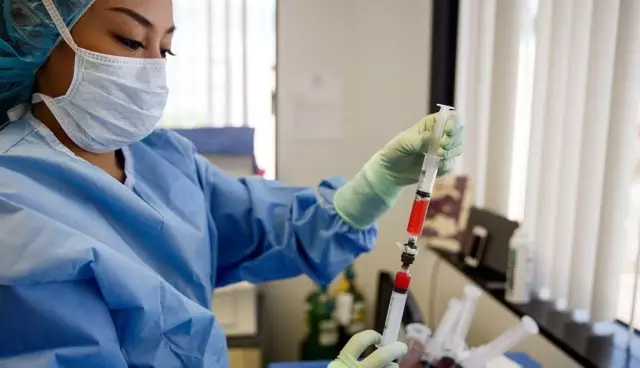Stem cells are a precious resource of life and have great promise in the field of medical research. With the technological advancement in the life sciences and the awakening of people's health awareness, more and more people have high hopes for stem cell technology. Regenerative medicine with stem cell therapy as its core will become another treatment route for medical treatment and surgical treatment, and it is one of the future development directions of medicine.
Stem Cell was used as a keyword search. As of June 30, 2016, more than 5,800 stem cell clinical trials have been registered at the National Institutes of Health (), involving more than 140 different types. The number of clinical studies during the 10-year period has increased by more than 600%.

With the development of society, human needs for the safety, effectiveness and controllability of stem cells and related products are becoming more and more urgent. Stem cell basis and transformation research aimed at clinical application has become a new research hotspot. Whether global or China, the market growth and prospects for stem cell applications are considerable.
However, although regenerative medicine and stem cell therapy are hot, new technologies will bring about profound changes in social life while promoting productivity. How to use reasonable policies and regulations to guide and manage, not only give space for the benign development of new technologies, but also avoid the chaos caused by barbaric growth, and always test the wisdom of governments and regulatory authorities.
US Stem Cell Regulation Policy
[Latest news] On June 14, Texas Governor Greg Abbott signed a bill allowing clinics and companies in the state to use stem cell treatment without FDA approval, which means patients have the right to choose whether to accept stem cells. treatment approach.

Texas Governor Greg Abbott
The bill will take effect on September 1. The Act stipulates that in the case of doctors who recommend stem cell therapy after considering other therapies, and under the supervision of the Hospital or Medical Institutional Review Board (IRB), patients with severe chronic or terminal illness may choose to receive stem cell therapy in the clinic – from adults. Tissues, such as stem cells used in therapy, are isolated from the patient's own fat. It is worth noting that the bill still requires that therapies have been tested in human clinical trials.
The US policy of treating stem cell treatment in recent years can be divided into two types: the federal government and the local government. Since March 2009, after the US President Barack Obama announced the lifting of the federal government-funded stem cell research, the attitude toward stem cells began to warm up.
Despite the favorable situation, there are still many twists and turns. August 23, 2010 United States District of Columbia District Court RoyceC. In a lawsuit involving stem cell research, Judge Lamberth issued a temporary ban on the grounds of destroying human embryos, banned federal funding for human embryonic stem cell research. The District Court of Appeals for the District of Columbia immediately responded by a ruling that Royce C. was revoked. Lamberth's interim injunction allows the National Institutes of Health (NIH) to continue funding human embryonic stem cell research before the final decision of the Court of Appeal. NIH subsequently said it will invest $358 million and $126 million in FY11 for human non-embryonic stem cell and human embryonic stem cell research.
Unlike the swaying attitude of the federal government, states in the United States have encouraged the development of stem cell business through local legislation. As the first state in the United States to support stem cell research through a referendum, the Californian people voted in California in November 2004 to pass California's 71st Proposal, the California Stem Cell Research and Therapy Act, authorizing the California government to issue public debt in the next decade. In the form of $3 billion to fund stem cell research, the California government established the California Institute of Regenerative Medicine in early 2005 to manage and allocate funds and organize and manage stem cell research projects.
Ganoderma lucidum extract,Senna leaf powder,Fritillaria Extract
Fufeng Sinuote Biotechnology Co.,Ltd. , https://www.sinuotebio.com